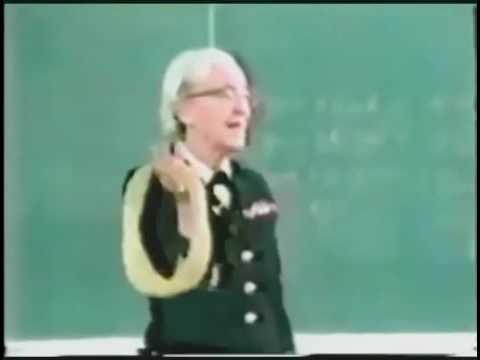The Story of Grace Hopper and the Nanosecond
Grace Hopper: The Computer Programming Pioneer
Grace Hopper was truly a pioneer in the field of computer programming. As one of the original team that programmed the Harvard Mark I computer, she helped develop some of the earliest computer programs. However, her most influential work was developing the first compiler. This revolutionary invention automated much of the programming process and made programming accessible to many more people. Due to her groundbreaking work, Grace Hopper received numerous honors during her lifetime, including over 40 honorary degrees from universities around the world. She also rose to the rank of Rear Admiral in the US Navy, making her one of the highest ranked women in Naval history. Even after mandatory retirement, the Navy recalled her to continue serving due to her immense contributions to their computer programs. Grace Hopper’s illustrious career truly cemented her place as a legendary figure and computer programming pioneer.
Lecturing on Computers
After finally retiring from the Navy, Grace Hopper continued sharing her knowledge by lecturing on the burgeoning field of computer science. During these presentations, she would often use a tangible example to demonstrate just how fast light travels. She began handing out small pieces of wire cut to the exact length that light travels in one nanosecond. Studying this wire allowed people to grasp the incredible speed of light in a way that simple numbers alone could not convey.

Measuring the Nanosecond
Calculating the Speed of Light
To determine the length of the nanosecond wire, Grace Hopper first had to calculate how far light travels in that incredibly small unit of time. The scientific community had established the speed of light at 299,792,458 meters per second through experiments dating back to the 1600s. Dividing this rate by 1 billion gives the distance light moves in one billionth of a second, also known as one nanosecond. Her calculation revealed this distance to be approximately 11.8 inches, just under 1 foot.
A Tactile Demonstration
By cutting a piece of wire to this precise measurement, Grace Hopper could physically demonstrate just how minuscule a nanosecond is. Handing out these “nanosecond wires” brought the scale of time down to a human level that was easily relatable. Examining something only a foot long made the tremendous speed of light finally comprehendible. Her unique teaching method helped audiences appreciate the rapid pace of emerging computer technologies relative to our own perception of time.
Advancing Understanding of Technologies
Continuing to Educate
Even after officially retiring from the Navy, Grace Hopper remained dedicated to educating others about cutting-edge computing topics. She traveled widely giving presentations on programming languages, operating systems, and more. Using tangible examples like the nanosecond wire kept complex subjects engaging and accessible. Her passion for instruction inspired many to pursue careers in the new field of computer science.
Inspiring Future Generations
Grace Hopper led the way for so many who followed in computer programming and related fields. By making advanced topics easily understandable, she helped foster growing interest in technology. Her own monumental accomplishments broke barriers for women in STEM. Through her dedicated teaching, Grace Hopper ensured the next generation would build upon the foundation she helped lay. Her legacy lives on in all those she inspired to advance our understanding of computers and push the boundaries of what is possible with technology.
A Lasting Legacy
An Enduring Inspiration
Today, Grace Hopper’s innovations and instructional methods continue benefiting countless individuals. Her development of the compiler opened the doors of programming to a mass audience. Her tangible teachings, like the nanosecond wire, set an example for bringing difficult ideas down to Earth. As one of the earliest computer programmers, she blazed a trail for the billions who now work in technology fields. Grace Hopper has rightly earned her title as a true pioneer and visionary in computing history.
Honoring Her Memory
In recognition of Grace Hopper’s immense contributions, the US Navy named a state-of-the-art guided missile destroyer after her in 1998. The USS Hopper is just one symbol commemorating this remarkable woman’s service and lifetime achievements. Various institutes, conferences and scholarships also preserve her legacy through education. Grace Hopper’s memory lives on as a constant source of inspiration for all those striving to advance technologies and make its wonders accessible to all. Her pioneering spirit of instruction will endure for generations to come.

